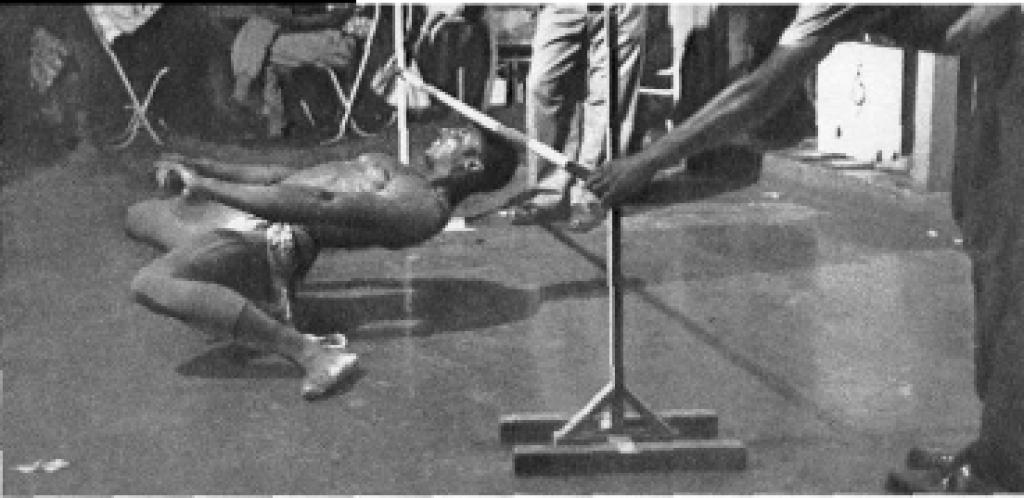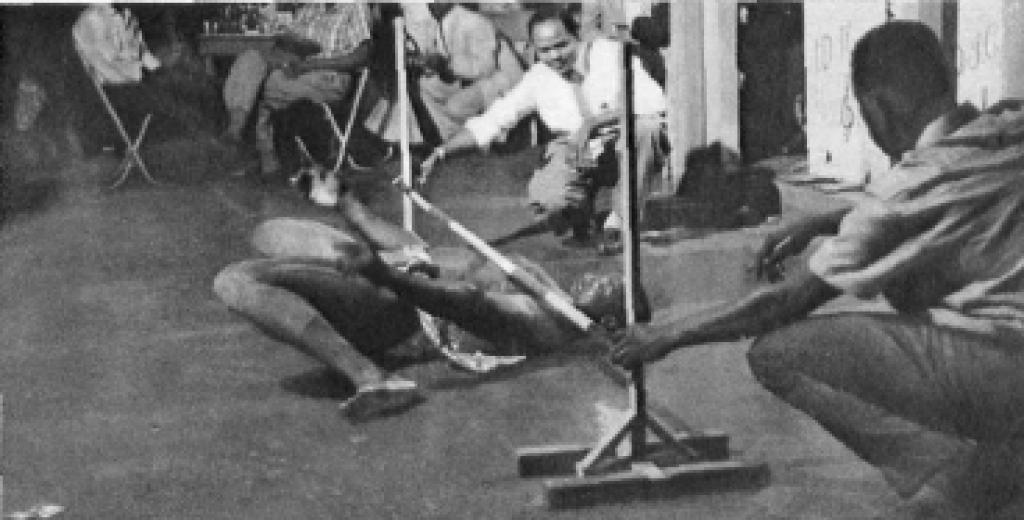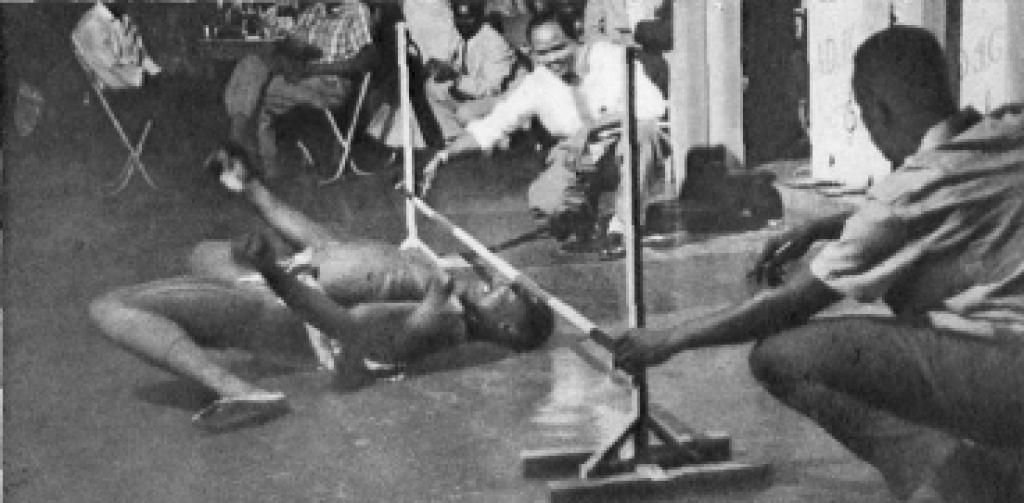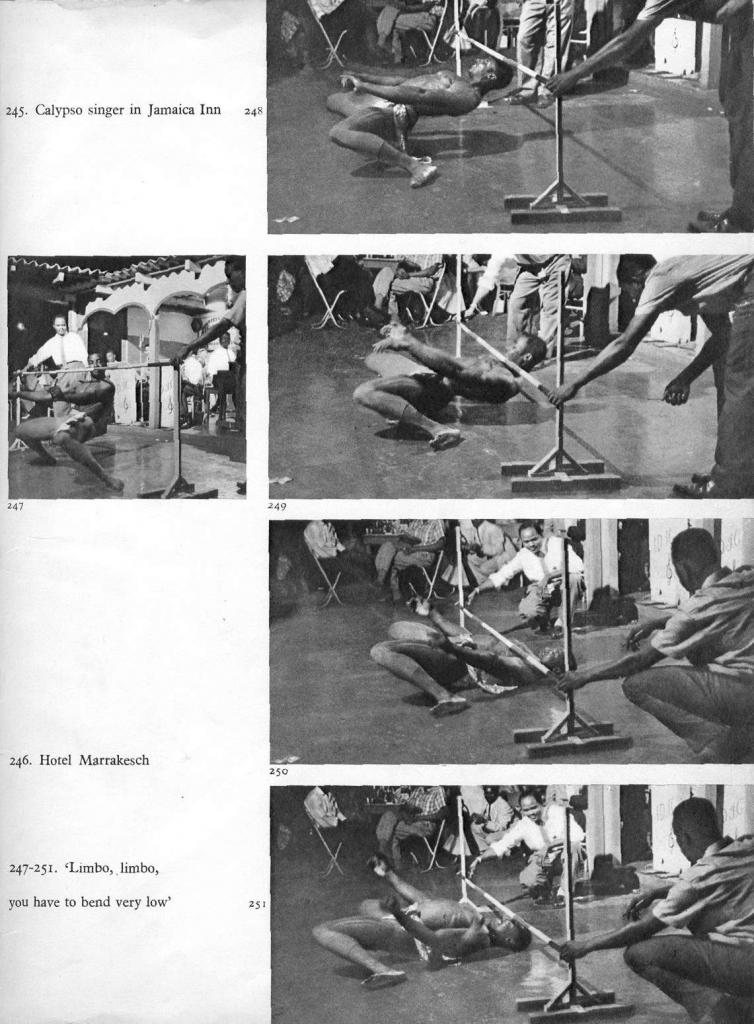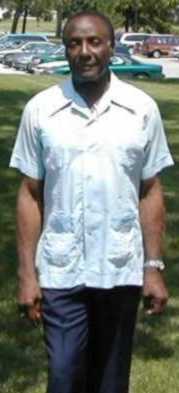From “Profile: Milton Dawes,” written by Paul Dennithorne Johnston, appearing in ETC: A Review of General Semantics, Vol. 60, No. 3 (Fall 2003).
A fascination with the stars over Jamaica led Milton Dawes to discover general semantics.
“One night while engaged in my usual stargazing, I saw a star, Canopus in the constellation Carina, that I found so beautiful to look at—it was like a diamond in the night sky—I decided to go to the library and read about stars,” Dawes told us recently. “I first read Science and Sanity around 1955. I borrowed it from, at that time, the only library in Kingston, Jamaica. In the library I found, on one set of shelves, books on astrophysics and astronomy. On the other side, I found books on philosophy and psychology—Descartes, Hume, Russell, Whitehead, Bergson, Eddington, Adler, Jung, and others. In those days, I didn’t understand much from these thinkers. Applying general semantics principles, I now know more about my difficulties in understanding some of these philosophers. Then I came across Science and Sanity, which I understood to a greater extent.”
Thus began a passionate commitment to general semantics in which Dawes continues to serve both as student and teacher, in which he has given uniquely to his students, and for which he has received well-earned recognition. In 1995, Dawes received the first Irving J. Lee Award for Excellence in Teaching General Semantics, sponsored by Dr. Sanford I. Berman, and in 2000 he received the Talbot Winchell Award for his significant contribution to the spread of general semantics.
Musician, creative thinker, writer, seminar-workshop leader, Trustee and Ambassador at Large of the Institute of General Semantics, Dawes takes an innovative approach to the teaching of general semantics. He often uses music: he will play parts of a song and analyze it in small steps to illustrate how we can use the calculus to increase our own awareness. He will distribute rhythm instruments to his students, and encourage them to play along as he plays the drums (African djembe). He draws on a wide range of skills and experiences from his diverse interests to enliven his work.
The organism-as-whole: Flexible ‘mind’ in flexible body
“I first visited Canada as a member of the Jamaica Pistol Team to the Pan American Games in Winnipeg in 1967. I didn’t win any medals, and a few days after the competition, flew to Montreal to join the Jamaica National Dance Theater Company as a dancer—part of the Expo 67 celebrations. I had also entered several Mr. Jamaica body building contests. I still do my weight lifting exercises. In the early sixties, I was a member of a rock-and-roll band called The Souvenirs. I played the harmonica. Also, I was a member of the Jamaica Folk Singers. We did a North America tour in 1971. I even did a very brief stand-in during a fight scene for one of the bad guys in the first James Bond film, Dr. No, filmed in Jamaica. In Montreal, I was one of the drummers who started Drumming on the Mountain about 25 years ago. It has become a tourist attraction with thousands of people visiting the site, and hundreds dancing to the drums on Sundays when the weather permits.
“I did not know of the Institute of General Semantics or the International Society for General Semantics until I moved to Canada in 1968. I went to my first general semantics seminar in 1972. At the Memorial Lecture that November, Charlotte Read asked me if I intended to attend another seminar. I told her that I came to the first seminar to see if I was on track in terms of my interpretation of what I had read; and that I was satisfied I was on track and I thought I had something to offer in terms of my studies of Science and Sanity. She invited me on the spot to join the Institute teaching staff and I accepted.”
Dawes, who has been on the teaching staff of the Institute of General Semantics for over 27 years, has given seminars, credit courses, and workshops to college students and to professional and non-professional groups in Canada, the USA, and Australia. His course topics include critical thinking and general semantics as a meta-critical-thinking system, problem-solving and decision making, living creatively, improving relationships, developing communication skills, management of change, conflict management, stress management, language and behavior, rhythms of life, thinking about thinking, and applying the methods of science and mathematics to everyday living.
“Drawing on the works of Alfred Korzybski, and Bernard Lonergan, S.J., I have developed my own time-binding insights and teaching methods. In my seminar-workshops, using music, drumming, films, small group discussions, and simple awareness exercises, I focus on using our personal experiences and the experiences of others, our observations, reflections, and metaphors, as ways to expand our horizons and develop clear thinking about the way we think and talk, and how this influences our attitudes and behavior. I am especially interested in sharing insights about how we can learn from ourselves, from anyone, and from anything.”
As a writer, Dawes has presented papers at five international conferences on general semantics. Many of his general semantics articles have been published in ETC (he is a Contributing Editor), and he has also published articles in the General Semantics Bulletin, and on the web site of the Dallas-Fort Worth Center for General Semantics.
“One aspect of Korzybski’s work that I have found most useful is the semantics of the calculus, in terms of closely following the continuous function that constitutes our behavior. Without finely tuned awareness of what we are observing, thinking, feeling, saying, doing, etc., we cannot consciously modify, stop, improve, change, etc., what and how we are evaluating-behaving. Without close awareness of our moment-to-moment operations, we cannot consciously apply the principles of the system to modify our thinking-feeling evaluations-behavior. The calculus underpins this formula : self-improvement is a function of self-correction ; self-correction is a function of self-awareness. I see-experience a close relationship between the calculus and consciousness of abstracting. Since we are constantly abstracting, even while asleep, the more aware we are, the more increments of information we have…. We have the potential to make more accurate maps of ourselves, others, and situations in which we find ourselves.”
Dawes noted that applying the semantics of the calculus, and the general semantics formulation of non-identity, can help us manage difficult change. “With a job loss at age 57 for instance, I was careful not to confuse present thinking-feeling at that time with unknown future possibilities. I was not as distressed as I might have been without this awareness.
“I also draw on the work of Bernard Lonergan, S.J., and I find particularly useful his notion of consciousness. He creates a classification involving five interrelated and hierarchical levels of consciousness : empirical consciousness, intelligent consciousness, rational consciousness, rational self-consciousness, and appropriation of rational self-consciousness. In another area, Lonergan uses the notion of the unconditioned in relation to what we `know.’ In this, our conclusions, etc., depend on the criteria we set up. In that sense, we don’t know anything absolutely. And so when I say `I know,’ I must ask myself, what standards, what criteria, etc., ground my knowing?”
In his seminar-workshops, Dawes reminds participants that general semantics principles can be experienced. “I encourage students to work not only at verbal understanding of the principles, but also to work at discovering experiences which they can consider as examples of general semantics principles. I also invite students to think of applying general semantics principles as ABM: attitudinal and behavioral modifiers. And I remind participants that one of the most effective ways I know to get a feel of the system involves watching how we talk.
“I remind participants that I am sharing my abstractions from what I have read of Korzybski’s works. I also emphasize that they work at relating GS principles with one another, so they can start to get a feel of general semantics as a system.”
Some Articles in ETC by Milton Dawes
“Multiordinality: A Point of View,” Vol. 43, No. 2, Summer 1986.
“Using GS,” Vol. 47, No. 1, Spring 1990.
“Management of Stress,” Vol. 47, No. 2, Summer 1990.
“Relative Invariance Under Transformation: About Hanging On and Letting Go,” Vol. 47, No. 4, Winter 1990.
“Taking Responsibility for the Meanings We Give : Part I,” vo1.48, No. 1, Spring 1991.
“Taking Responsibility for the Meanings We Give : Part II,” Vol. 48, No. 3, Fall 1991.
“All in All, That’s Not All,” Vol. 50, No. 1, Spring 1993.
“What Makes Us Human?,” Vol. 51, No. 3, Fall 1994.
“An Approach to Everyday Living: A Note Regarding the Calculus,” Vol. 53, No. 4, Winter 1996.
“GS Is Not ‘About’ GS,” Vol. 54, No. 3, Fall 1997.
“Some Myths Addressed by GS,” Vol. 54, No. 4, Winter 1997.
“‘Theories’ in Everyday Situations,” Vol. 55, No. 3, Fall 1998.
“On Conscious Abstracting and a Consciousness of Abstracting: Some Abstractions, Part I,” Vol. 56, No. 3, Fall 1999.
“On Conscious Abstracting and a Consciousness of Abstracting : Some Abstractions, Part II,” Vol. 56, No. 4, Winter 1999.
“Science, Religion and God: My Story,” Vol. 57, No. 2, Summer 2000.


